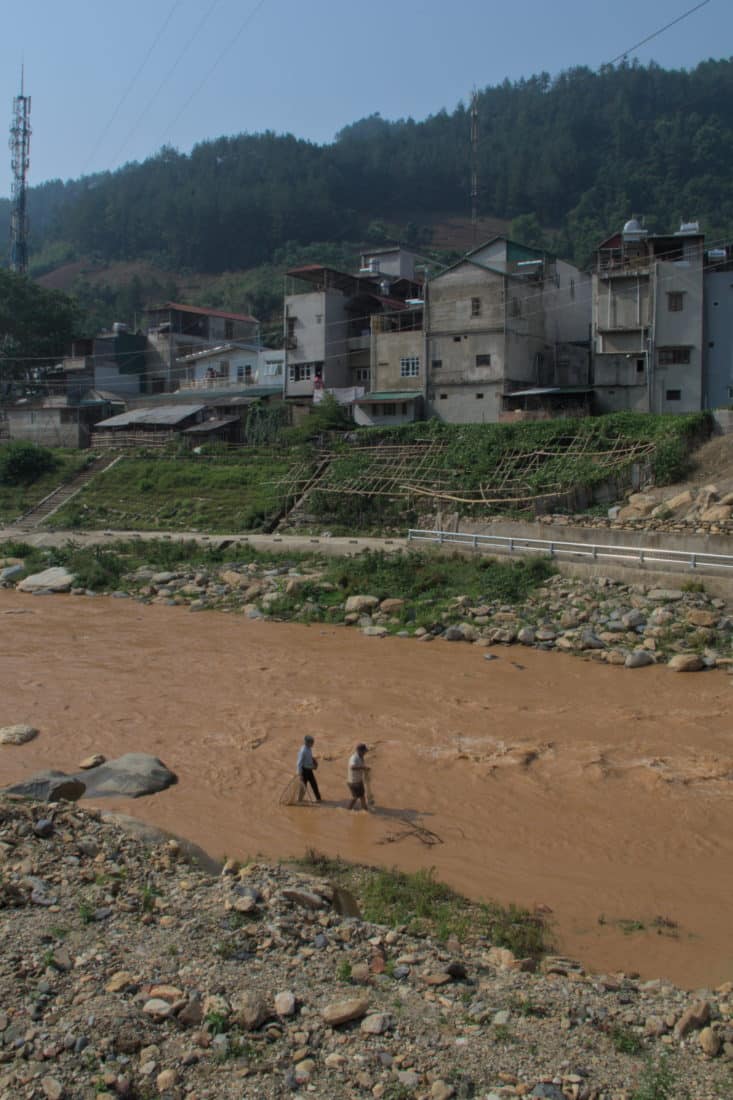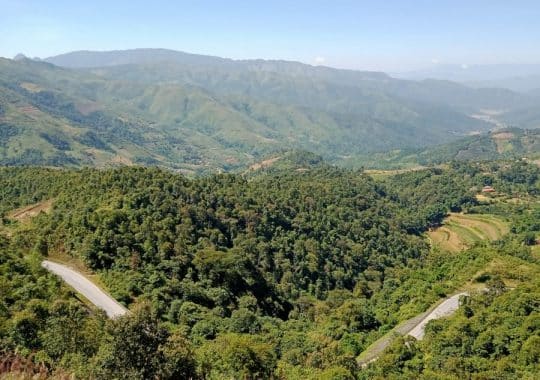Mù Cang Chải – Land of Rice Terraces
Mu Cang Chai rivals SaPa as the area holding the most breathtaking rice terraces in Vietnam. Besides its natural beauty, it offers both brilliant on and off-road riding for motorcycle touring. It’s around 275 km northwest of Hanoi in Yên Bái Province and is well-worth including in a tour to either pass through or to stop off and explore.
It’s a rather poor area that has not seen much development and minority people still wear their colourful traditional garments in day to day life. The combination of locals continuing their ancestral ways and the amazing geography of Mu Cang Chai make it a must-see place for photographers.
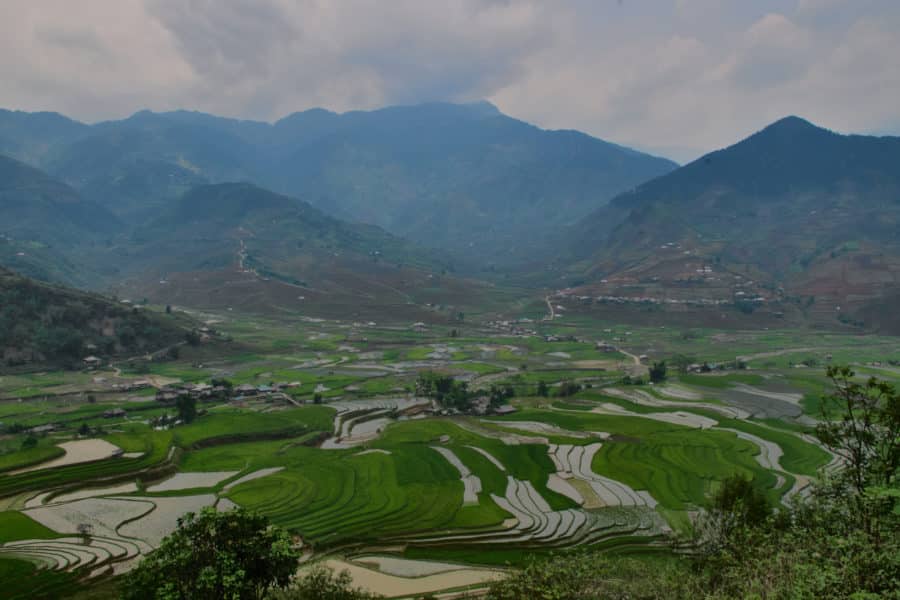
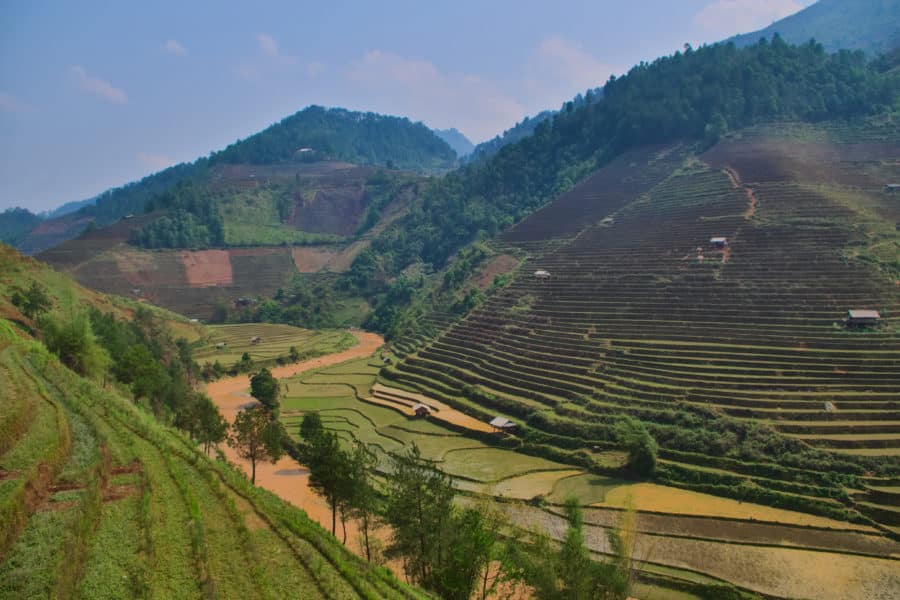
Rice Terraces of the Hmong People
The steep mountainsides of Mu Cang Chai have been skillfully transformed into rice terraces. Because of the sharp elevations the terraces are mostly quite narrow at around 1 to 1.5m wide.
This type of farming uses gravity to distribute water from top to bottom and a series of gates are opened and closed to control the water flow.
Aside from rainfall the terraces are also fed from springs and streams higher up the mountains. Lengths of bamboo are cut in half and are used as pipes to funnel water from its source.
From May to early September the rice fields are a vibrant green. Vietnamese tourists prefer to visit Mu Cang Chai between the middle of September to October – Just before harvest time it is when the rice paddies are a striking yellow.
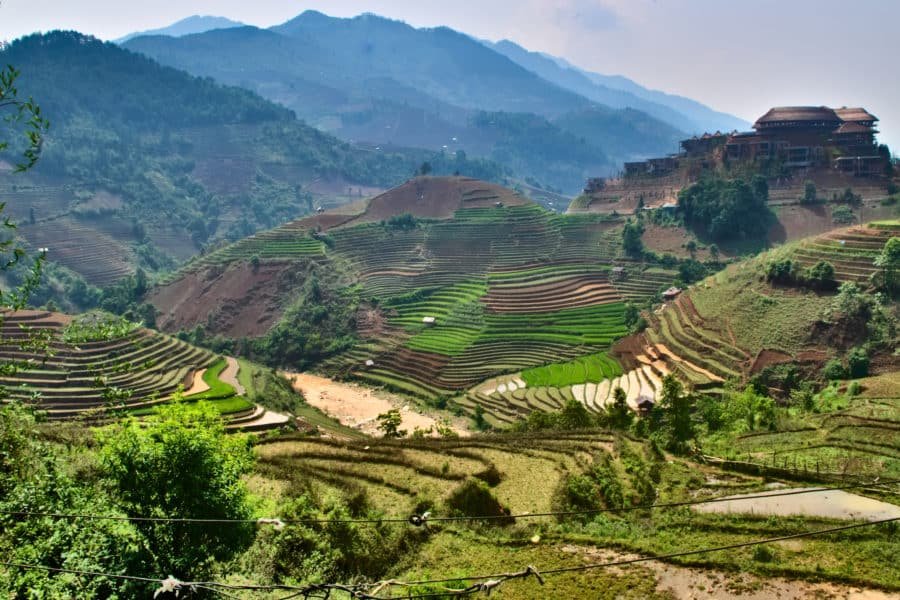
Weather of Mu Cang Chai
The winter months are generally clear although can get very cold – In December and January it can get as low as 5 degrees Celsius so be prepared to rug up. In late winter and spring drizzle is common.
The monsoonal wet season typically falls between May and early September – it’s a good idea to check the weather forecast when heading there in these months. Due to the steep terrain of the region, extreme weather can be dangerous.
At the beginning of August 2017 Mu Cang Chai was devastated by massive amounts of torrential rain. Flashfloods and landslides washed away entire houses as well as school and commercial buildings.

Mu Cang Chai Species & Habitat Conservation Area
The Mu Cang Chai Species & Habitat Conservation Area covers over 20 00 hectares and is in the Hoàng Liên Sơn Mountain Range. This range stretches from northern Vietnam near SaPa some 180 km south to Son La Province and is an extension of the Himalayas.
Although the area has not yet been comprehensively studied it is acknowledged as a place of substantial biodiversity. So far 788 plant species, 40 mammals and 127 types of birdlife have been recorded.
One of the reserves main goals is to preserve the rare Western black-crested gibbon and the critically endangered Grey leaf monkey populations that residing living there. Other threatened mammals living in area are the Dhole (Asiatic wild dog), the Clouded leopard and the Southern serow (a kind of goat-antelope).
There is also an effort to conserve and replant an ancient species of conifer tee – the Taiwania cryptomerioides can grow to a height of 55 metres. It’s commonly known as the Chinese coffin tree as its timber is quite good for making coffins and furniture. It’s probably a more interesting name than uncomfortable Chinese chair tree or dinner table tree.
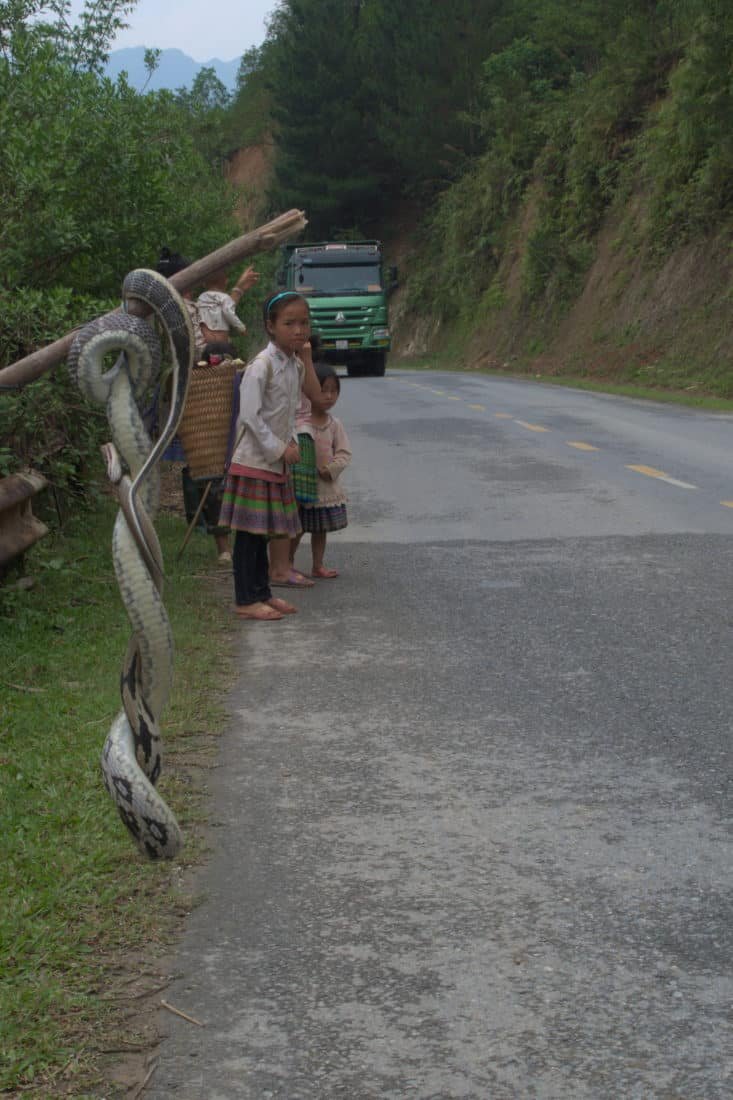
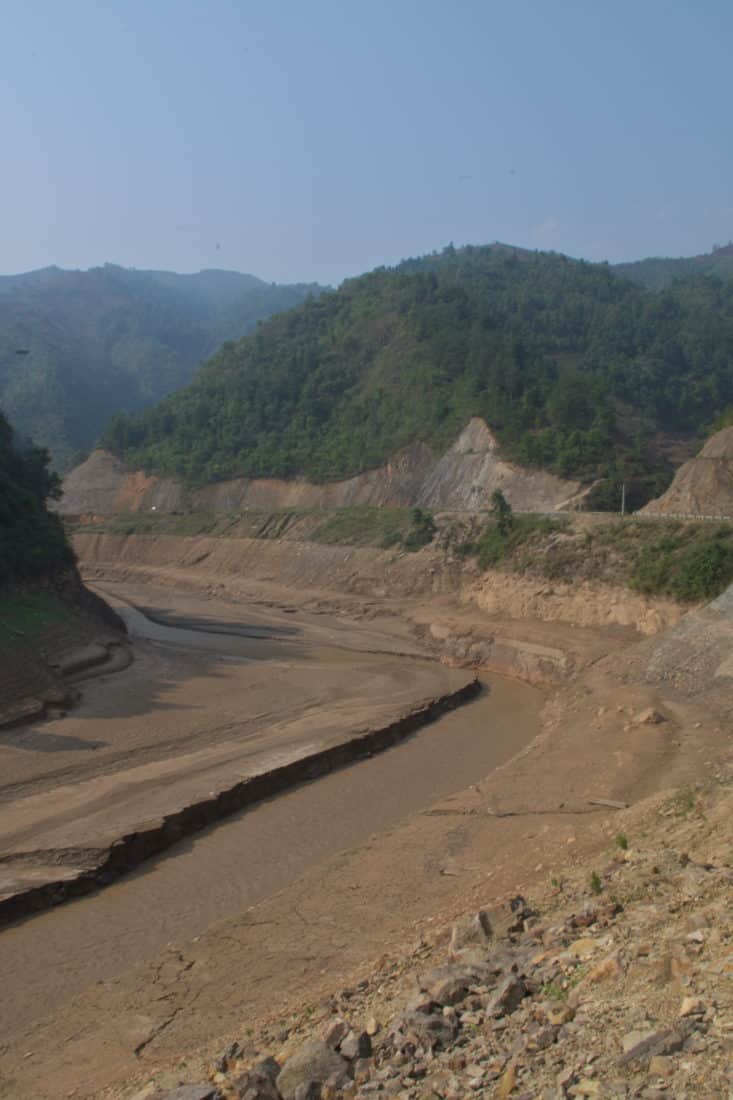
Đèo Khau Phạ – Heaven’s Horn Mountain Pass
If you are coming from or going to Mu Cang Chai town its more than likely you will be travelling through Khau Pha Mountain pass on road QL32. This 30 km mountain pass is one of the biggest in northern Vietnam. It was named by the Thai minority because on certain days the mountain top can look like a giant horn piercing through the clouds.
It snakes up a massive mountain and provides stunning views of a valley adorned with rice terraces below. In the past it was quite dangerous for riders but these days it’s in great condition and is perfectly safe.
The top of the pass is around 1200 m above sea level, has viewing points, restaurants and is a popular spot for local picnickers. In recent years it’s become a jump-off point for paragliding being that it has good updrafts and thermal winds. For the last few years Khau Pha Pass has held a paragliding festival which also involves music, art and culture. It’s seems as though it’s going to be an annual event for the area and new launching point is being prepared higher up at 1500 m in altitude.
There is also a monument being built to memorialize a unit of 14 Mong guerillas who fought against French occupation before 1945. Utilizing the pass terrain as cover the fighters were able to disrupt French supply lines with basic guns and stone traps.



